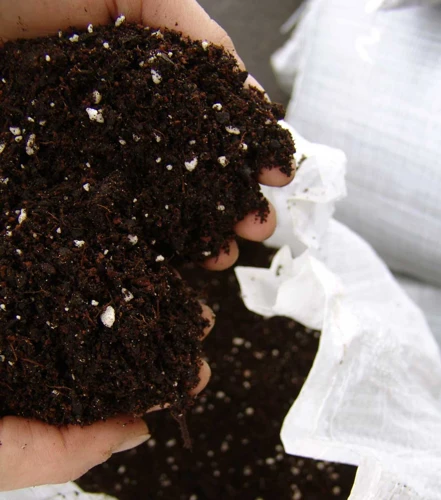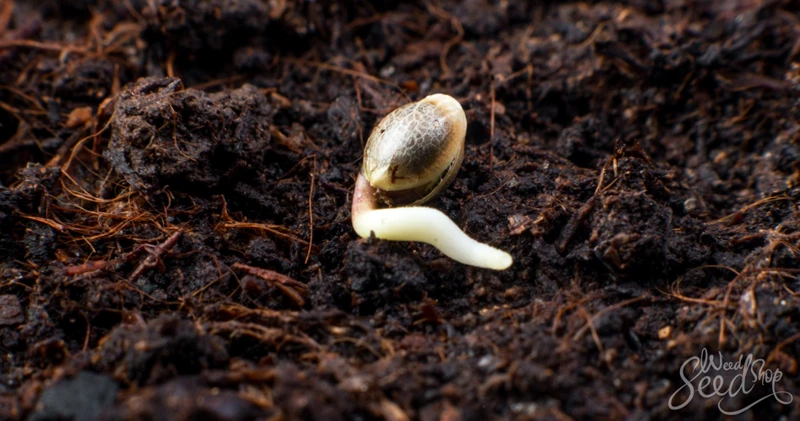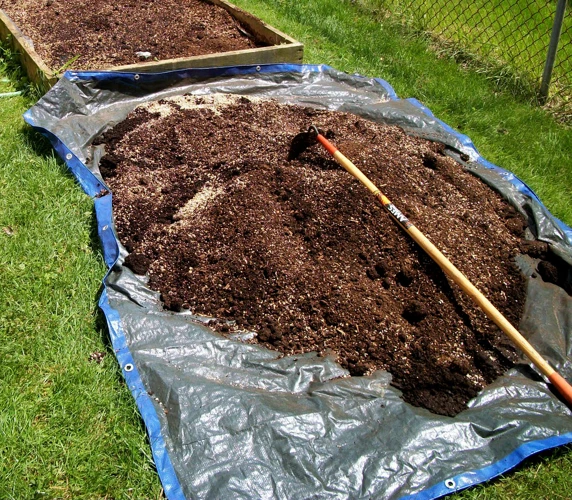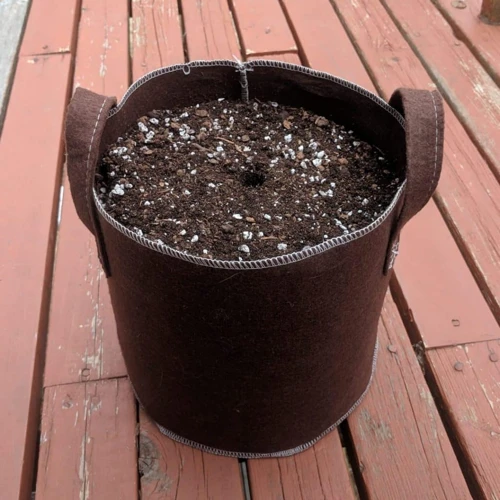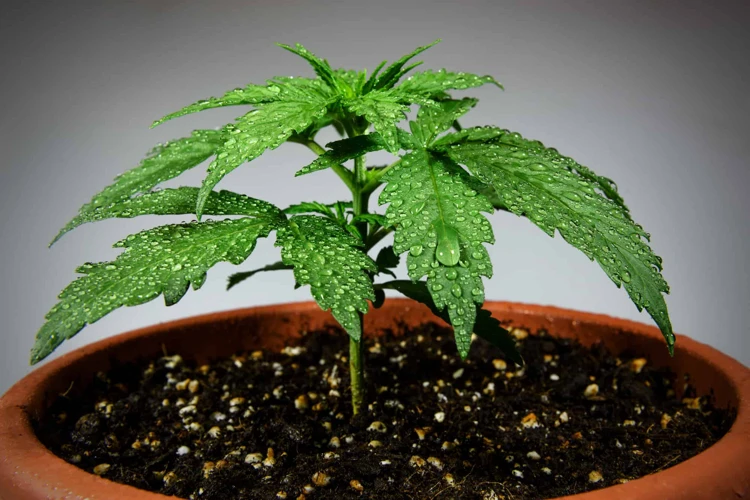
Creating the Ideal Soil Mix for Cannabis Plants
Growing cannabis can be a fulfilling and rewarding experience, but it requires a lot of patience, effort, and attention to detail. One of the most crucial factors in ensuring a successful harvest is the quality of the soil your plants grow in. However, with so many options available in the market, it can be overwhelming to choose the right soil mix for your cannabis plants. In this article, we will guide you through the process of creating the perfect soil mix for your cannabis plants, explaining the role of soil in cannabis growth, and highlighting the factors that make up a good soil mix. We’ll also cover the ingredients required for the perfect soil mix, the steps to create it, how to test your soil mix, and how to adjust it for different stages of growth. Plus, we’ll share common mistakes to avoid when growing cannabis in soil. Read on to learn more and take the first step towards growing healthy and productive cannabis plants.
Why is the Soil Important?
Contents
The soil serves as the foundation for your cannabis plants’ growth and development. Without proper soil, the plants would not be able to thrive and produce the desired yield of buds.
The role of soil in cannabis growth is multifaceted. First and foremost, it serves as the source of water and essential nutrients that the plants need in order to grow, flower, and produce buds. The soil also plays a significant role in the uptake and transportation of these nutrients throughout the plant’s cells.
The soil serves as a support system for the plants’ roots, anchoring them in place and providing stability. This is important because cannabis plants can become quite top-heavy as they grow taller, and the soil helps to prevent them from falling over.
Finally, the soil also serves as a buffer against changes in temperature and moisture levels, providing protection for the plants’ delicate root system.
Because of the important roles that soil plays in cannabis growth and development, it is vital that you take the time to create the perfect soil mix for your plants. This will ensure that they have the best possible chance of thriving and producing a bountiful harvest.
The Role of Soil in Cannabis Growth
When it comes to growing cannabis, soil is a crucial element in the equation. The soil serves as the foundation for the plant to develop and thrive, providing it with necessary nutrients, water, and oxygen to support a healthy growth cycle. Without a suitable soil mix or the right balance of nutrients, cannabis plants may struggle to survive or may produce stunted, subpar buds. Understanding the role that soil plays in the cannabis growth process is crucial for achieving a successful harvest.
What Makes a Good Soil Mix?
A good soil mix for cannabis plants should provide the necessary nutrients and support for healthy growth. The mix should be loose and well-draining, yet retain enough moisture to keep the roots hydrated. The table below summarizes the important characteristics of a good soil mix for cannabis plants.
| Nutrients | Drainage | Moisture Retention | pH Balance | Texture |
|---|---|---|---|---|
| The soil mix should contain a balanced mix of macro and micronutrients for plant growth, including Nitrogen (N), Phosphorous (P), and Potassium (K). | The soil mix should be well-draining to prevent waterlogging and root rot. A mix with good drainage also allows for better oxygenation of the roots. | The soil mix should retain enough moisture to keep the roots hydrated, but not too much that it leads to waterlogged soil, which can cause root rot. | Soil pH is crucial for cannabis growth. The optimal pH range for cannabis is between 6.0 and 7.0. A good soil mix should have a pH within this range. | The texture of the soil mix should be loose and well-aerated, allowing for easy root growth and nutrient uptake. |
A good soil mix for cannabis plants should have the right balance of macro and micronutrients, good drainage, appropriate moisture retention, optimal pH balance, and the appropriate texture. By understanding what makes a good soil mix, growers can make informed decisions when selecting and creating their own soil mix.
Ingredients for the Perfect Soil Mix
Creating the perfect soil mix for your cannabis plants requires a careful selection of ingredients. A balanced soil mix will ensure that your plants receive the necessary nutrients and support for optimal growth.
Organic soil components are derived from living organisms and provide a rich source of nutrients for your plants. Examples of organic soil components include:
- Compost: Compost is created by decomposing organic matter such as leaves, grass clippings, and kitchen scraps. It is a nutrient-rich source of organic matter that can improve soil structure and water-holding capacity.
- Poultry Manure: Poultry manure is high in nitrogen and phosphorus, making it an excellent source of these essential nutrients for your plants. However, it should be used sparingly as too much can burn the plants.
- Bat Guano: Bat guano is another great source of nitrogen and phosphorus, as well as other essential micronutrients like potassium and calcium. It is also an excellent soil conditioner that can improve soil structure and water-holding capacity.
- Worm Castings: Worm castings are a natural fertilizer that can improve soil structure and provide your plants with a wide range of essential nutrients. They are also high in beneficial microorganisms that can help suppress soil-borne pathogens.
- Kelp Meal: Kelp meal is derived from seaweed and is rich in micronutrients like iron, zinc, and magnesium. It is also a good source of plant growth hormones that can stimulate root growth and improve plant health.
Inorganic soil components are derived from non-living sources and can help improve soil structure and aeration. Examples of inorganic soil components include:
- Perlite: Perlite is a lightweight volcanic rock that can improve soil aeration and drainage. It is also pH-neutral, so it will not alter the pH of your soil mix.
- Vermiculite: Vermiculite is a mineral that can improve soil moisture holding capacity, making it a great addition to sandy soils. However, it is not recommended for soils that are already moisture-retentive.
- Coco Coir: Coco coir is a fibrous material derived from coconut husks. It is an excellent soil amendment that can improve soil structure, aeration, and water-holding capacity. It is also pH-neutral, making it a great addition to soil mixes that require a neutral pH.
- Limestone: Limestone is often added to soil mixes to raise the pH and make the soil more alkaline. It is important to use caution when adding limestone, as too much can make the soil too alkaline.
When selecting your soil components, it is important to consider the needs of your specific cannabis strain as well as the characteristics of your growing environment. A well-balanced soil mix will provide your plants with the necessary nutrients, support, and environmental conditions for optimal growth.
Organic Soil Components
When it comes to creating the perfect soil mix for your cannabis plants, it’s important to consider the organic soil components that will provide essential nutrients to your plants. Organic soil components are derived from living or once-living materials, such as compost, and can vary in their nutrient content and pH levels. Choosing the right organic components can be perplexing, as there are so many to choose from, but by understanding their individual qualities and benefits, you’ll be on your way to creating a nutrient-rich soil mix that will help your cannabis plants thrive.
Inorganic Soil Components
Inorganic soil components play a crucial role in the structure and drainage of soil. These components are minerals and other non-living materials that help to improve soil quality and provide a stable base for your cannabis plants.
Perlite: Perlite is a popular inorganic soil component that is often added to soil mixes to improve drainage and aeration. It is a lightweight mineral that is made from volcanic glass and is great for helping to prevent soil compaction.
Vermiculite: Vermiculite is another popular inorganic soil component that is made from a natural mineral that is expanded through heat. Like perlite, it helps to improve drainage and aeration, but it also has the added benefit of being able to retain moisture.
Pumice: Pumice is a volcanic rock that is often used as an inorganic soil component. It is lightweight, porous, and helps to improve drainage and aeration.
Sand: Sand is a common inorganic soil component, but it should be used sparingly in soil mixes for cannabis plants. While sand can improve drainage, using too much can create a soil that is too coarse and does not retain enough moisture.
Charcoal: Charcoal is another inorganic soil component that can improve drainage and absorb excess moisture. It also has the added benefit of helping to filter impurities from water.
When creating your soil mix, it is important to balance the use of organic and inorganic components to create a soil that is both nutrient-rich and well-draining. Consider using a combination of these inorganic components in your soil mix to create the perfect environment for growing healthy and bountiful cannabis plants.
Creating the Soil Mix
Creating the perfect soil mix for your cannabis plants is a crucial step in achieving a healthy and bountiful harvest. In order to create the perfect soil mix, you will first need to gather all the necessary ingredients. These ingredients should include both organic and inorganic components, as both types of materials help to create a balanced and nutritious soil environment for your cannabis plants.
Organic Soil Components:
Organic soil components are derived from living organisms and are an essential part of any successful cannabis soil mix. These components include things like compost, worm castings, and bat guano. Compost is a popular organic soil component that can be made at home or purchased from a garden or farming supply store. It is made up of decomposed plant matter and is rich in nutrients. Worm castings are another excellent organic soil component. They are rich in nitrogen, phosphorus, and potassium – all essential nutrients for cannabis plants. Bat guano is also a popular organic component that is rich in nitrogen and other essential nutrients.
Inorganic Soil Components:
Inorganic soil components come from non-living sources and include things like perlite, vermiculite, and coconut coir. Perlite is a volcanic glass that has been heated to expand and is commonly used to add airflow to soil mixes. Vermiculite is another inorganic soil component that helps to increase water retention in the soil. Coconut coir is a byproduct of coconut processing and is becoming increasingly popular as a sustainable and eco-friendly soil component.
Step-by-Step Soil Mix Recipe:
Once you have gathered all of your organic and inorganic soil components, you can start creating your perfect soil mix. Here is a step-by-step recipe to follow for creating the perfect soil mix for your cannabis plants:
1. Begin by mixing together equal parts of compost and coconut coir in a large container.
2. Add in a handful of perlite to increase airflow and drainage.
3. Mix in a small amount of vermiculite to help with water retention.
4. Add in a few scoops of worm castings to provide essential nutrients for your plants.
5. Finally, mix in a small amount of bat guano to provide additional nitrogen and other crucial nutrients.
Testing Your Soil Mix:
Once you have created your soil mix, it is essential to test it before using it for your plants. Begin by checking the pH levels of your soil mix, as cannabis plants prefer a slightly acidic environment with pH levels ranging from 6.0 to 6.5. You will also want to test the nutrient levels in your soil mix to ensure that they are within the recommended range for cannabis growth.
Adjusting Soil Mix for Different Stages of Growth:
As your cannabis plants grow, their nutrient and pH requirements will change. It is essential to adjust your soil mix accordingly. During the vegetative stage, cannabis plants require higher levels of nitrogen, whereas during the flowering stage, they require higher levels of phosphorus and potassium. You can adjust your soil mix by adding or reducing the amount of organic and inorganic components you are using.
Common Mistakes to Avoid:
There are several common mistakes to avoid when creating your soil mix. One of the most common mistakes is overwatering your plants, which can lead to root rot and other issues. It is also critical to ensure that your soil mix has the correct pH levels, as improper pH levels can lead to nutrient deficiencies and plant stress. Finally, using poor quality soil components can lead to issues with pests, disease, and overall plant health.
Creating the perfect soil mix is essential for achieving healthy and bountiful cannabis plants. By following the steps outlined above and testing your soil mix before use, you can ensure that your plants have the nutrients and environment they need to thrive. Remember to adjust your soil mix accordingly during different stages of growth and avoid common mistakes like overwatering and using poor quality soil components.
Step-by-Step Soil Mix Recipe
Creating the perfect soil mix for your cannabis plants is crucial for their growth and success. While there are pre-made soil mixes available, it’s often best to create your own to ensure the proper balance of nutrients and components. Here is a step-by-step recipe for creating the perfect soil mix for your cannabis plants:
Step 1: Choose Organic and Inorganic Components
The first step in creating the perfect soil mix is to decide on the organic and inorganic components you want to use. Organic components provide the necessary nutrients and microbes for your plants, while inorganic components provide structure and drainage to your soil.
Step 2: Calculate the Correct Amounts
Once you’ve decided on the components you want to use, it’s important to calculate the correct amounts of each to ensure the right balance. A general rule of thumb is to use approximately 70% organic matter and 30% inorganic matter.
Step 3: Mix the Organic Components
Start by mixing the organic components in a large container. This can include components such as peat moss, compost, worm castings, bat guano, and bone meal. These components provide essential nutrients and beneficial microbes to your soil mix.
Step 4: Add the Inorganic Components
Next, add the inorganic components to the mix. This can include perlite, vermiculite, sand, and rockwool. These components provide structure to the soil mix and improve drainage.
Step 5: Mix Thoroughly
Thoroughly mix all components together until there is an even distribution of both organic and inorganic components throughout the mix.
Step 6: Store Soil Mix
Store your soil mix in a dry, cool place until you’re ready to use it. It’s important to keep the soil mix free from moisture and humidity, as this can cause mold and mildew to develop.
Creating the perfect soil mix for your cannabis plants is a crucial step in ensuring their success. By following these steps and using high-quality components, you can create a soil mix that provides the necessary nutrients, microbes, and structure for your plants to thrive.
Testing Your Soil Mix
After creating the soil mix, it is important to test its properties before using it for your cannabis plants. There are two main tests that you should conduct – checking soil pH and measuring nutrient levels.
Checking Soil pH: pH is a measure of acidity or alkalinity and it is important for cannabis growth. The ideal pH range for cannabis is between 6.0 and 7.0. If the pH balance of your soil mix is too high or too low, it can lead to nutrient deficiencies or toxicities in your plants.
To check the pH of your soil mix, you can use a digital pH meter or a soil pH test kit. It’s important to take multiple samples from different areas of the soil mix to get an accurate reading. Once you have the pH reading, you can adjust the pH level using pH adjusting products like lime or sulfur.
Measuring Nutrient Levels: Cannabis plants require a variety of nutrients to grow properly. The three main nutrients that are essential for cannabis growth are nitrogen, phosphorus, and potassium. However, there are many other micronutrients that your plants will need as well.
To measure nutrient levels in your soil mix, you can conduct a soil nutrient test. These tests can be conducted at home or you can send a sample of your soil mix to a professional lab for analysis. Soil nutrient tests will give you information about the levels of different nutrients in your soil mix, including nitrogen, phosphorus, and potassium.
Once you have the results of your soil nutrient test, you can adjust the nutrient levels in your soil mix by adding fertilizers or other nutrients. It is important to follow the recommended dosage instructions when adding fertilizers to avoid over-fertilizing your plants.
Testing your soil mix before using it for your cannabis plants is crucial for ensuring that you provide the best growing environment for your plants. By adjusting the pH balance and the nutrient levels of your soil mix, you can prevent any potential problems and give your plants the best chance for healthy growth.
Checking Soil pH
One of the most crucial aspects of maintaining a healthy growing environment for your cannabis plants is monitoring the soil pH level. The pH level of your soil impacts nutrient availability, microbial activity, and overall plant growth. It is essential to regularly check the pH level of your soil throughout the growing process. But how can you determine the pH level of your soil, and what should you do if it’s too high or too low? Let’s explore the importance of checking soil pH and how to properly do it.
Measuring Nutrient Levels
When it comes to measuring nutrient levels in your soil mix, there are a few important factors to consider. First and foremost, you need to determine which nutrients your cannabis plants need and in what quantities. This will depend on the specific strain you’re growing and the stage of growth your plants are in.
Nutrient Testing Kits
One way to measure nutrient levels is to use a nutrient testing kit. These kits typically include test strips or solutions that you can add to a soil sample to measure the levels of various nutrients. Common nutrients to test for include nitrogen, phosphorus, and potassium, as well as micronutrients like zinc and iron.
Soil Analysis
Another option is to send a sample of your soil mix to a lab for analysis. This will provide a more detailed breakdown of the nutrients present in your soil and their concentrations. The lab will also be able to provide recommendations for adjusting your soil mix to ensure your plants are getting the nutrients they need.
Visual Signs of Nutrient Deficiencies
In addition to measuring nutrient levels directly, you can also look for visual signs of nutrient deficiencies in your plants. For example, yellowing leaves may indicate a lack of nitrogen, while stunted growth or small buds can be a sign of phosphorus or potassium deficiencies.
It’s important to keep in mind that nutrient requirements can vary depending on the strain, so it’s a good idea to do some research on the specific needs of your chosen cannabis strain. Proper nutrient levels are crucial for ensuring your plants reach their full potential, so taking the time to measure and adjust your soil mix as needed can make all the difference in your yield.
Adjusting Soil Mix for Different Stages of Growth
As a cannabis plant grows, its nutrient and water requirements change. It’s necessary to adjust the soil mix to provide the right balance of nutrients at different stages of growth. Here’s how to do it:
Vegetative Stage: During the vegetative stage, cannabis plants require more nitrogen to build strong stems and leaves. To meet this requirement, use a soil mix that has a higher percentage of nitrogen-rich components such as worm castings or blood meal.
Flowering Stage: In the flowering stage, cannabis plants require less nitrogen and more phosphorous and potassium for bud and flower production. To adjust the soil mix, add more bone meal or bat guano, which are rich in phosphorous, and potassium sulfate or kelp meal for potassium.
Transplanting: When transplanting cannabis plants to larger containers, it’s important to adjust the soil mix. The new container should have a mix that is higher in nutrients, and there should be a balance between soil and other materials such as vermiculite or perlite to allow for better drainage.
Harvest: When preparing for harvest, it’s important to flush the soil of nutrients and minerals to avoid a harsh taste. One way to do this is to water the plants with plain water for about two weeks before harvest to allow the plant to use up excess nutrients.
By adjusting the soil mix at different stages of growth, you can provide your cannabis plants with the right balance of nutrients and water they need to grow strong and healthy. It’s important to monitor the plants closely and adjust the soil mix as needed to provide optimal conditions for growth.
Common Mistakes to Avoid
One of the most important aspects of growing cannabis is understanding what mistakes to avoid in order to achieve the best results. Here are some common mistakes to watch out for:
Overwatering: One of the most common mistakes that new growers make is overwatering their plants. While it may seem like a good idea to give your plants plenty of water, too much can actually be harmful. Overwatering can lead to soil erosion, root rot, and other problems that can stunt the growth of your cannabis plants. In general, you should only water your plants when the soil feels dry to the touch.
Improper pH Levels: Another common mistake that growers make is not paying attention to the pH levels of their soil. Cannabis plants thrive in soil that is slightly acidic, with a pH level between 6.0 and 6.5. If the pH level is too low or too high, your plants may be unable to absorb the nutrients they need, leading to stunted growth.
Using Poor Quality Soil: The quality of your soil is crucial to the success of your cannabis plants. If your soil is lacking in nutrients or has an improper pH level, your plants will not grow properly. It’s important to invest in high-quality soil that is specifically designed for growing cannabis, or make your own soil mix with the appropriate ingredients.
Avoiding these common mistakes can go a long way in ensuring that your plants grow healthy and strong. Remember to pay close attention to the needs of your plants, and make adjustments as necessary to give them the best chance of success.
Overwatering
One of the most common mistakes that new growers make is giving their cannabis plants too much water. While it may seem like a good idea to constantly keep the soil moist, overwatering can actually harm your plants and stunt their growth. In fact, overwatering is one of the leading causes of cannabis plant death. It’s important to understand how much water your plants need and how to properly water them to avoid this mistake. Let’s explore some tips to prevent overwatering and keep your plants healthy.
Improper pH Levels
One of the most common mistakes that cannabis growers make is not monitoring the pH levels of their soil mix. The pH level of the soil affects the plant’s ability to absorb nutrients, which in turn affects the overall health and growth of the plant.
What is pH?
The pH scale measures the acidity or alkalinity of a substance, with a range of 0 to 14. A pH level of 7 is considered neutral, while a pH level below 7 is considered acidic and above 7 is considered alkaline. Cannabis plants thrive in slightly acidic soil, with a pH level between 6.0 and 7.0.
The Effects of Improper pH Levels
- Low pH levels (acidic soil) can prevent the plant from absorbing certain nutrients, such as calcium, magnesium, and phosphorus.
- High pH levels (alkaline soil) can cause the plant to suffer from nutrient deficiencies and may lead to stunted growth, discoloration of leaves, and other problems.
- Fluctuating pH levels can also lead to nutrient lockout, where the plant is unable to absorb essential nutrients despite their presence in the soil.
How to Correct pH Levels
To correct the pH level of your soil mix, you can use pH testing kits or digital pH meters. If your soil mix has a pH level that is too low, you can add lime or dolomite to raise the pH level. If the pH level is too high, you can add sulfur or aluminum sulfate to lower it. It’s important to follow the instructions carefully when adding these substances, as overcorrection can lead to further problems.
It’s also important to note that some nutrients are more available to plants at certain pH levels. For example, phosphorus is most available to plants at a pH level of 6.5, so if your soil mix is too far outside of this range, your plant may suffer from a phosphorus deficiency. Keeping a close eye on your pH levels can help you avoid these types of problems and ensure that your cannabis plants are getting the nutrients they need to thrive.
Using Poor Quality Soil
Using poor quality soil can be detrimental to the health and growth of your cannabis plants. It is important to ensure that you are using high-quality, nutrient-rich soil that is free from toxins or contaminants. In order to avoid using poor quality soil, here are some common signs and causes of poor soil quality:
| Signs of Poor Soil Quality | Causes of Poor Soil Quality |
|---|---|
| Frequent wilting or yellowing of leaves | Lack of essential nutrients in the soil |
| Poor drainage or water retention | Compacted soil from improper preparation or overuse |
| Stunted growth or small yields | Toxic substances or pollutants in the soil |
| Pest or disease infestations | Weed seeds or other contaminants in the soil |
In order to avoid using poor quality soil, it is crucial to conduct proper research and testing before selecting a soil mix. Look for organic soil components that are rich in essential nutrients, and avoid inorganic components that may contain harmful chemicals or heavy metals. Additionally, make sure to test your soil mix regularly to ensure that it is maintaining the correct pH levels and nutrient concentrations for optimal plant growth. By using high-quality soil and avoiding common mistakes, you can ensure that your cannabis plants will thrive from seed to harvest.
Conclusion
In summary, creating the perfect soil mix for cannabis plants requires a careful balance of organic and inorganic components to provide the necessary nutrients, aeration, and drainage for optimal growth. While there are many variations of soil mix recipes, it’s important to test and adjust the mix as needed throughout each growth stage.
Maintaining proper pH levels and nutrient levels is crucial for the health and productivity of your plants. Overwatering and using poor quality soil can also negatively impact your grow.
However, by following the steps outlined in this article and avoiding common mistakes, you can ensure your plants have the best possible growing environment to produce high-quality buds. Remember to be patient and attentive to your plants’ needs throughout the entire grow process. With careful planning and attention to detail, you can create the perfect soil mix for your cannabis plants and achieve a successful harvest.
Frequently Asked Questions
What is the ideal pH range for cannabis soil?
The ideal pH range for cannabis soil is between 6.0 and 7.0.
Can I use regular garden soil for my cannabis plants?
No, regular garden soil is not recommended for cannabis plants as it may not have the right balance of nutrients and can contain harmful bacteria.
How often should I water my cannabis plants?
Water your cannabis plants when the top inch of soil feels dry to the touch. Avoid overwatering as it can lead to root rot.
Is it better to use organic or inorganic soil components?
It is recommended to use a combination of both organic and inorganic soil components for the perfect soil mix as they each have their own benefits.
How do I adjust my soil mix for different stages of growth?
You can adjust your soil mix by adding more or less nutrients depending on the stage of growth your cannabis plants are in. During the flowering stage, you may want to add more phosphorus and potassium.
Can I reuse soil from previous cannabis grows?
Yes, you can reuse soil from previous cannabis grows as long as you properly compost and amend it with additional nutrients.
What is vermiculite and why is it used in soil mixes?
Vermiculite is a natural soil mineral that helps to retain water and improve soil aeration in soil mixes.
How do I measure nutrient levels in my soil mix?
You can measure nutrient levels in your soil mix by using a soil nutrient test kit or by sending a soil sample to a laboratory for analysis.
Why is it important to test the pH of my soil mix?
Testing the pH of your soil mix is important because it affects the availability of nutrients to your cannabis plants and can impact plant growth and health.
What should I do if I overwater my cannabis plants?
If you overwater your cannabis plants, allow the soil to dry out before watering again and improve soil drainage. You can also add a soil amendment such as perlite to improve soil aeration.

